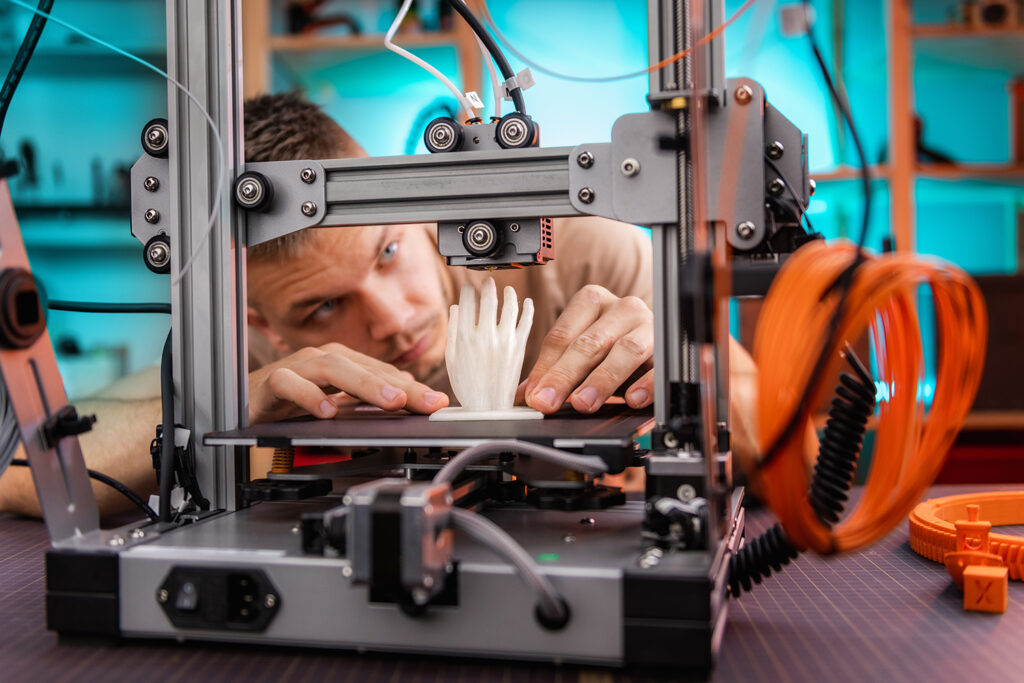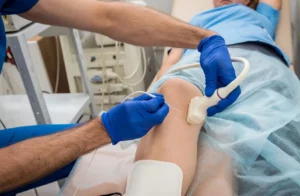
Innovation is the keystone of the medical device industry – companies constantly strive to use more advanced technologies to more efficiently create higher-quality devices. The use of 3D printing in medical device design is a prime example of the forward movement in the industry.
3D printing in medical devices has grown significantly in the last decade, as the cost of printing technology has decreased, and quality of prints has improved. 3D printing technology has become commonplace in academic curriculum, ensuring familiarity among engineers exiting school and entering the field. The representative quality of the materials, as well as the variety of types of materials available for use in prototyping and simulation, has also greatly improved. Not long ago, 3D printing was limited to rigid materials, which were representative of those manufactured through traditional means. More recently, soft materials and those emulating organic or physiological materials are starting to catch up to their hard counterparts in quality and availability, allowing the use of 3D printing to expand to additional applications.
What is 3D Printing?
3D printing creates functional three-dimensional objects layer by layer. The process is also known as additive manufacturing. Using a computer-aided design (CAD) model, a 3D printer can create an object according to preset specifications and in geometries that were previously difficult or not possible to manufacture.
How Does 3D Printing Help the Medical Field?
There are many potential applications for 3D printing in the medical field. Because 3D printers can create complex designs, such as uniquely matching a patient’s anatomy, the technology can be used for: custom implants and prosthetics; anatomical models for surgical planning, teaching, and training; and medical device prototypes.
Benefits of 3D Printing in Medical Device Design
Customization: The use of 3D printing in medical device design provides flexibility, allowing you to make customized products and device components, as well as easily make adjustments throughout the design and development process. 3D printers can seamlessly produce additional components of a device or allow a device to be tailored to specific aspects of a patient population. CAD models are also no longer limited to engineered components either; 3D prints may be generated from physiologically based CAD models, a CT scan for example, and can be used by medical professionals to evaluate the suitability of a device for their patients.
Speed: That same flexibility allows designers to quickly make changes to their design, without having to wait for additional equipment or new parts to arrive, or for relationships with vendors to be established. Having the ability to create new parts quickly also helps designers generate prototypes faster, giving investors and development teams an early view at the look of the finished product.
Reduced risk: Medical device companies are always looking for ways to reduce and mitigate risks in their product and process. 3D printing in medical device design empowers designers and developers to work through more iterations faster to find improvements, while accelerating potential failures, to improve the next design. Additionally, it allows for medical device testing and validation earlier and more regularly. Doing so removes risks earlier in the process before the heavy design work is done, saving time, minimizing unknowns, and producing a better product and process.
Considerations in 3D Printing in Medical Device Design
Cleaning: Due to the nature of additive manufacturing process, 3D printed medical equipment can be more difficult to clean and sterilize. This is especially true for 3D printing in biomedical applications and implantable devices. It is necessary to ensure the outlined cleaning process is valid for removing incidental materials produced as part of the printing process from the final product. Because the regulatory body outlines strict cleaning process controls, this is critical for FDA (U.S. Food and Drug Administration) approved 3D printed medical devices.
Cost: 3D printing can be utilized to lower the cost of prototyping, as many materials are extremely affordable. However, even though the cost has reduced for all materials as 3D printing has become increasingly widespread, some materials are still comparatively more expensive than others. This is particularly true in 3D printed metals.
The potential of 3D printing in medical device design is extremely promising, with cost, quality, and material options improving at a rapid pace. At Sterling, we keep our finger on the pulse of these advancements, as our design and development experts find new and innovative ways to capitalize on them. From user interface design, workflow and CAD mock-ups to the creation of 3D printed prototypes, our multifaceted medical equipment design services ensure your medical device meets clinical, commercial, and technological objectives while adhering to strict regulatory requirements. Please contact us today.




